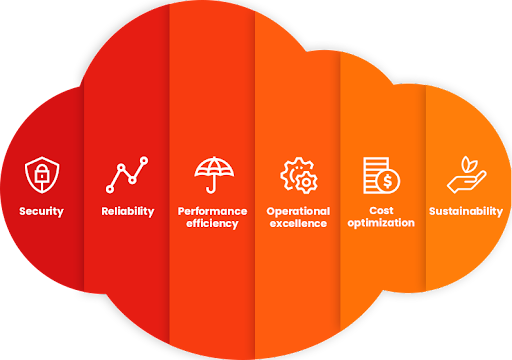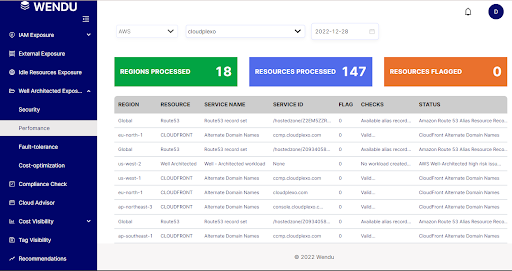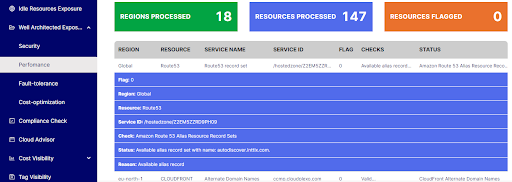
AWS Well-Architected Framework: Performance Efficiency
Welcome back to the AWS Well-Architected Series. In our previous post, we dealt extensively on the need to build a cost optimised cloud architecture in order to ensure that you don’t run into cloud wastes and that cloud resources are well utilised.Peter Drucker said, "Efficiency is doing things right". Continuing our series on The AWS Well-Architected Framework, we'll be looking at another pillar- The Performance Efficiency pillar; which focuses on structured and streamlined allocation of IT and computing resources.
Building on the foundation we've laid on what cloud architecture is, this blog post will address how to build an efficient cloud architecture, best practices and principles.
What Is An Efficient Cloud Architecture?
An efficient cloud architecture is one that optimally utilises cloud services and resources, such as storage and computing, to meet specific business objectives. This architecture will typically include components such as Infrastructure-as-a-Service (IaaS), Platform-as-a-Service (PaaS), and Software-as-a-Service (SaaS), as well as other tools and services. All of these components should be configured in a way that optimises performance, scalability, and cost efficiency, while providing a secure and reliable environment for applications and data.
The AWS Performance Efficiency Pillar
The AWS Performance Efficiency Pillar focuses on improving the performance and cost efficiency of applications running on the AWS Cloud. It also includes the ability to use computing resources efficiently to meet system requirements, and to maintain that efficiency as demand changes and technologies evolve.
This pillar of the AWS Well-Architected Framework is designed to help customers analyse their existing workloads and identify opportunities to optimise their applications to improve performance and reduce costs. This pillar also provides guidance on how to evaluate and optimise workloads, including designing and selecting the right instance types, deploying auto scaling, and leveraging caching technologies. Additionally, it provides guidance on how to improve cost-efficiency by monitoring and controlling usage and costs, utilising reserved instance (RI) purchasing strategies, and optimising resources with AWS services.
It will be a waste of IT investments to build a cloud architecture that is not efficient and that’s why this pillar is important. The goal of this pillar is to ensure that all components of the cloud architecture run efficiently and securely.
Principles Of The Performance Efficiency Pillar
There are five design principles for performance efficiency in the cloud:
- Automate to optimize resource utilization: Use automation to optimize the allocation and utilization of resources, which can help reduce waste and improve efficiency.
- Elasticity to handle load: Design systems that can take you global in minutes and also help you remain local when necessary by scaling up or down based on demand, so that you can handle fluctuating load without over-provisioning resources.
- Decouple to improve scalability: Decouple components and services so that they can scale independently, which can improve the overall scalability of your system.
- Stateless to improve scalability: Design stateless components and services, which don't maintain state between requests, to improve scalability and make it easier to scale out.
- Monitor to optimize resource utilization: Monitor resource utilization and performance metrics to identify opportunities for optimization and improve efficiency.
Best Practices Of The Performance Efficiency Pillar
- Data Driven Approach: Take a data-driven approach to building a high-performance architecture. Gather data on all aspects of the architecture, from the high-level design to the selection and configuration of resource types.
- Review Choices Regularly: Reviewing your choices on a regular basis ensures you are taking advantage of the continually evolving AWS Cloud. Monitoring ensures you are aware of any deviance from expected performance. Make trade-offs in your architecture to improve performance, such as using compression or caching, or relaxing consistency requirements.
- Choose The Right Solution For Your Workloads: The optimal solution for a particular workload varies, and solutions often combine multiple approaches. AWS Well-Architected workloads use multiple solutions and enable different features to improve performance.
How To Build An Efficient Cloud Architecture
- Identify your workload requirements: Before you start building your architecture, it's important to understand the workload requirements of your application. This includes factors such as the expected traffic, data storage needs, and performance requirements.
- Use automation to optimize resource utilization: Automation can help you optimize resource allocation and utilization, which can help reduce waste and improve efficiency. This includes tools such as autoscaling and resource management systems.
- Decouple components and services: Decoupling components and services can improve the scalability and flexibility of your architecture. This involves designing components and services that are independent and can scale independently of each other.
- Monitor resource utilization and performance: Regularly monitoring resource utilization and performance metrics can help you identify opportunities for optimization and improve efficiency. This includes tools such as monitoring and alerting systems.
Wendu And An Efficient Cloud Architecture
Wendu helps you identify over provisioned and idle resources within your AWS architecture, thus helping you run an efficient cloud architecture in terms of monitoring resource utilization and performance.
Wendu, through its automated well architected assessment of your AWS architecture, gives you full visibility, across every region you have assets in, of how efficient your architecture is. This helps you ensure that you’re following best practices for an efficient cloud architecture, across all regions..


Learn more about Wendu here, and you can also request a demo to see Wendu in action.